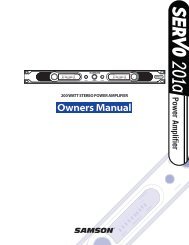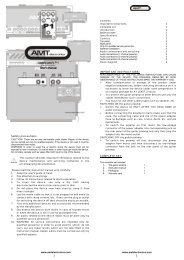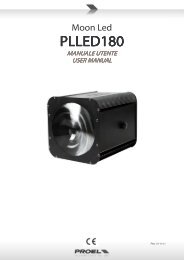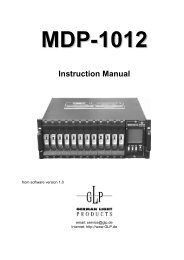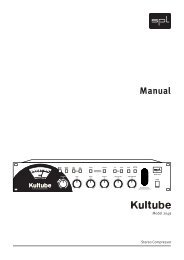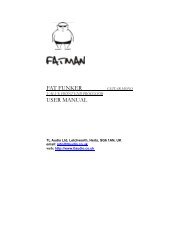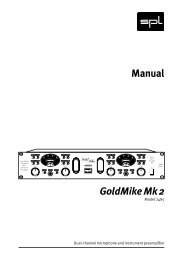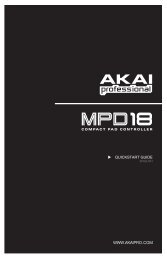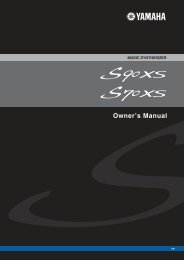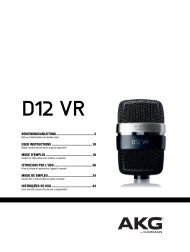You also want an ePaper? Increase the reach of your titles
YUMPU automatically turns print PDFs into web optimized ePapers that Google loves.
28<br />
QUICKSTART MANUAL<br />
Filters Menu<br />
We use filters in synthesizers for changing and shaping the timbre of a sound. The <strong>Virus</strong> <strong>TI</strong> <strong>Snow</strong> has two<br />
filters, which can be run in series or parallel. ‘Series’ means that the output of Filter 1 goes straight into Filter<br />
2, and it is the output of Filter 2 that you hear.<br />
Soft Knob Parameter Meaning<br />
#1 Filt 2 Offset/<br />
Cutoff2<br />
This determines the offset of Filter 2, relative to that of Filter 1. Filter 2 Cutoff<br />
is set by default to follow Filter 1 Cutoff at the same frequency.<br />
By adjusting this parameter, you cause Filter 2 to operate at a different<br />
frequency from Filter 1, which will change the perceived depth of the filters.<br />
Please note this parameter is highly dependent on other parameters within<br />
the filter section, and may not always have an audible effect.<br />
In certain patches, this parameter will be displayed as ‘Cutoff 2’. This is<br />
when the Cutoff Link parameter is set to Off.<br />
#2 Saturation Type Choose a distortion/lo-fi effect for the output of Filter 1. Adjust the intensity<br />
of the effect with the Value 3 knob (see below).<br />
Try out all the different saturations, which vary from standard overdrives to<br />
more exotic digital varieties. There are also a couple of 1-pole filters in there,<br />
should you need one of these instead.<br />
#3 Osc Volume<br />
(Saturation)<br />
From -64 to 0 (default) this controls the volume of the oscillators. From<br />
0 to +63 this determines the level of saturation for Filter1, so long as the<br />
Saturation parameter (Value 2 knob) is enabled. ‘Saturation’ is the term used<br />
to describe the effect of increasing the input signal to a level beyond that<br />
which is healthy, thereby creating distortion or additional overtones, which in<br />
many cases sound really great.<br />
Please be aware that certain Saturation types will have an audible effect<br />
even with Saturation at +0.<br />
‘Parallel’ means the oscillator signal is divided into two channels, one of which goes into Filter 1, the other<br />
into Filter 2. In this case, you hear a mixture of the outputs of both filters. The following parameters are available<br />
to edit via the 3 Value knobs.<br />
Mod Menu<br />
Please select patch “Tutorial 5” RAM8 8-5). Press EDIT/SHIFT + MOD to enter the Modulation menu.<br />
‘Modulation’ is the term used to describe a function which changes the value of another parameter over<br />
time. Specifically for this purpose, the <strong>Virus</strong> has 3 LFOs or ‘Low Frequency Oscillators’. These are different<br />
from the oscillators used to generate the sound, as they operate at much lower speeds.<br />
The LFOs have been designed to run at an independent rate, or to slave to the overall tempo of the current<br />
patch or Multi. If they are set to Rate, then you can choose a value between 0 - 127, and if they are set to<br />
Clock, you can choose a divider setting, based on a whole bar of 4/4, whereby 1/4 represents a rate equivalent<br />
to quarter notes or crotchets.



